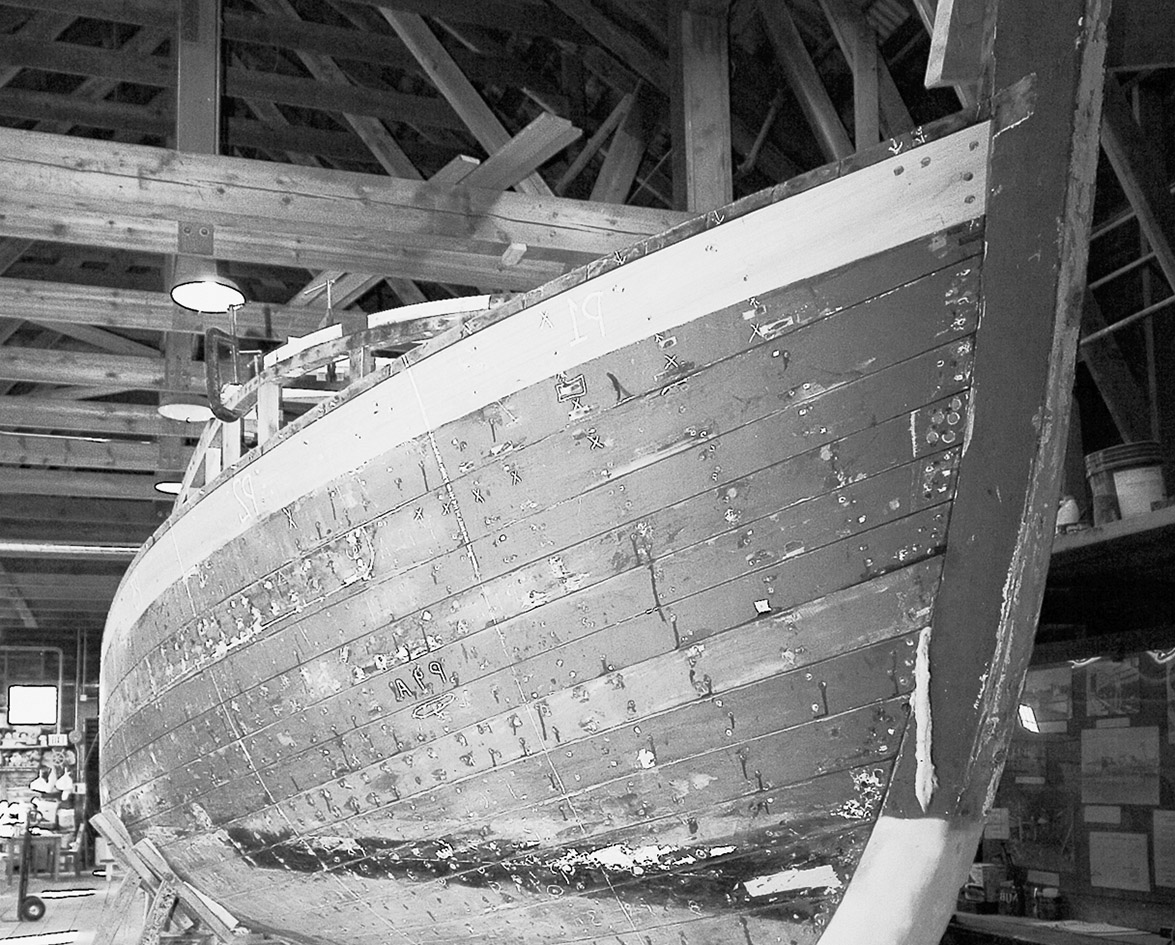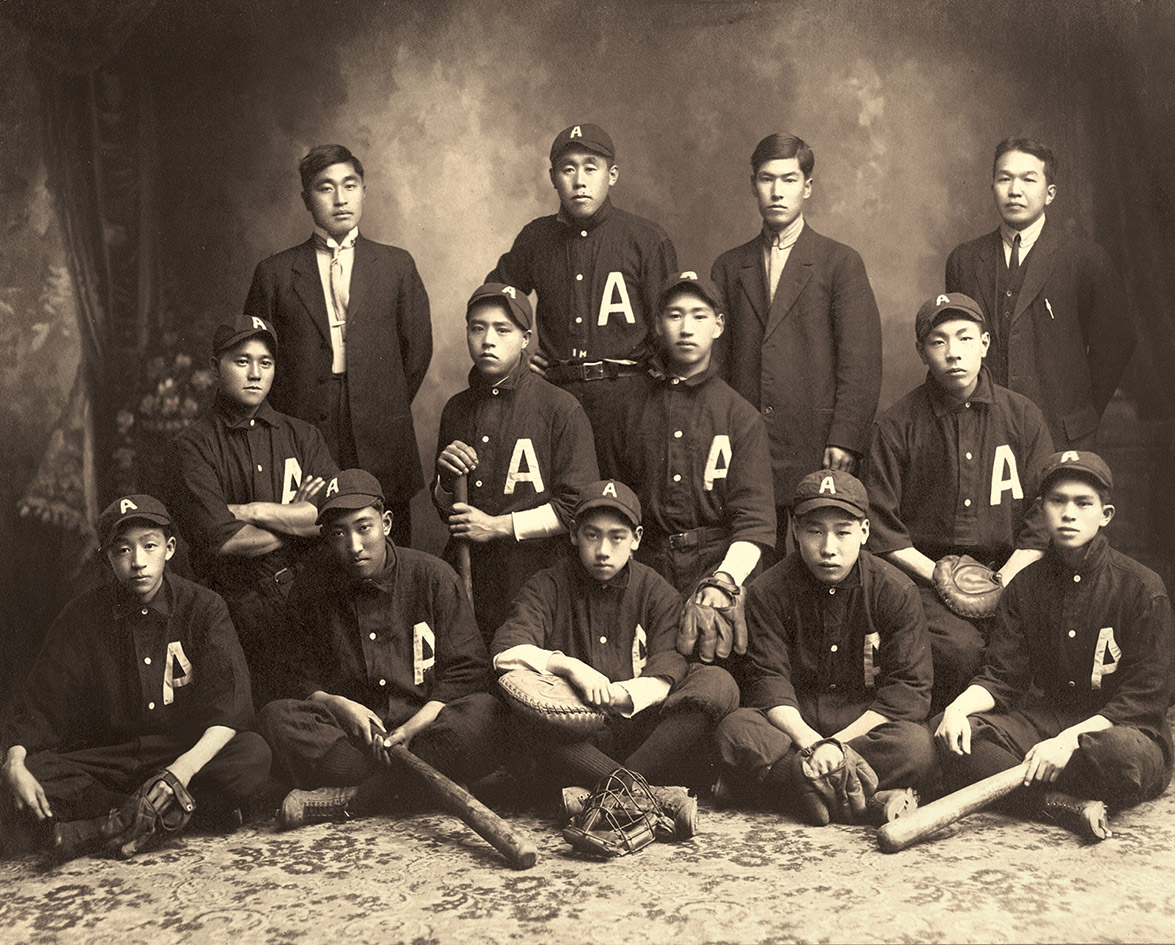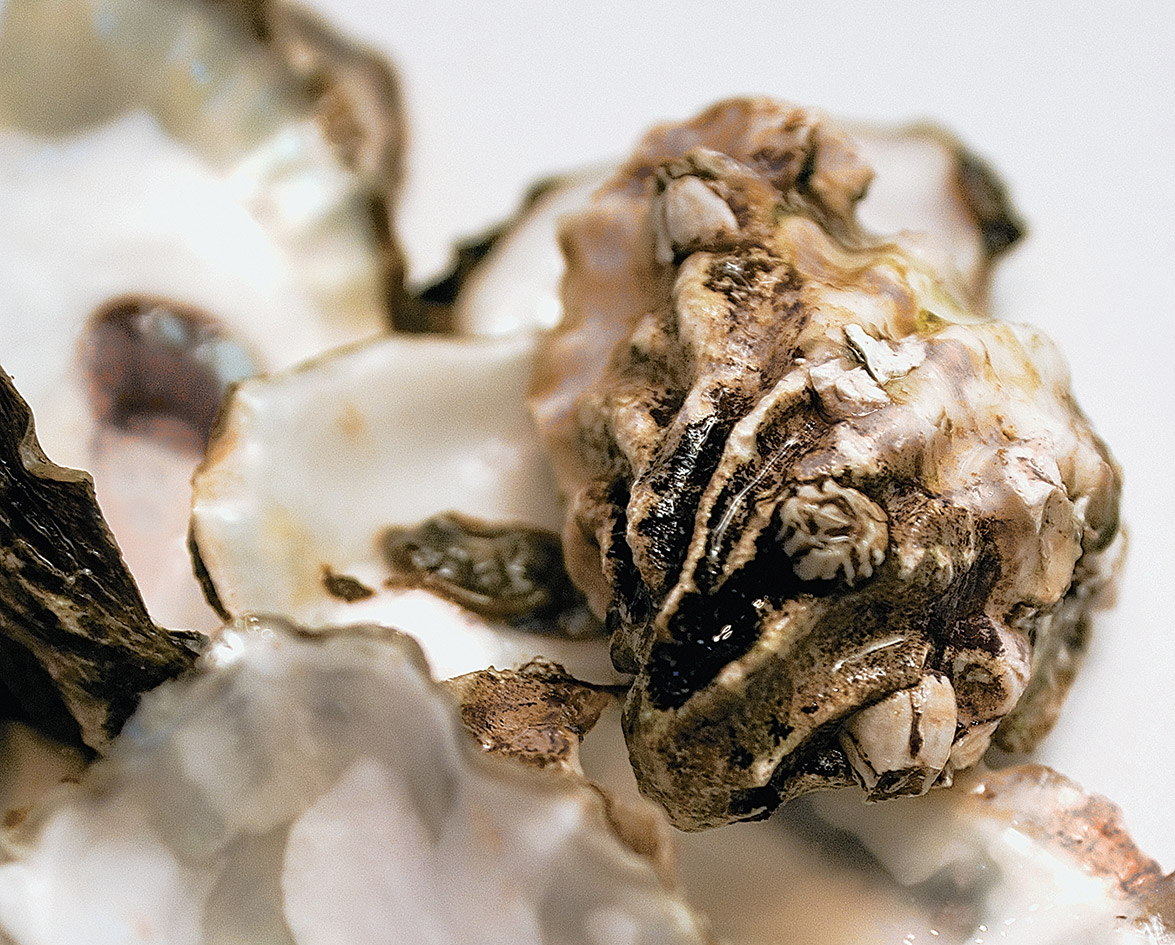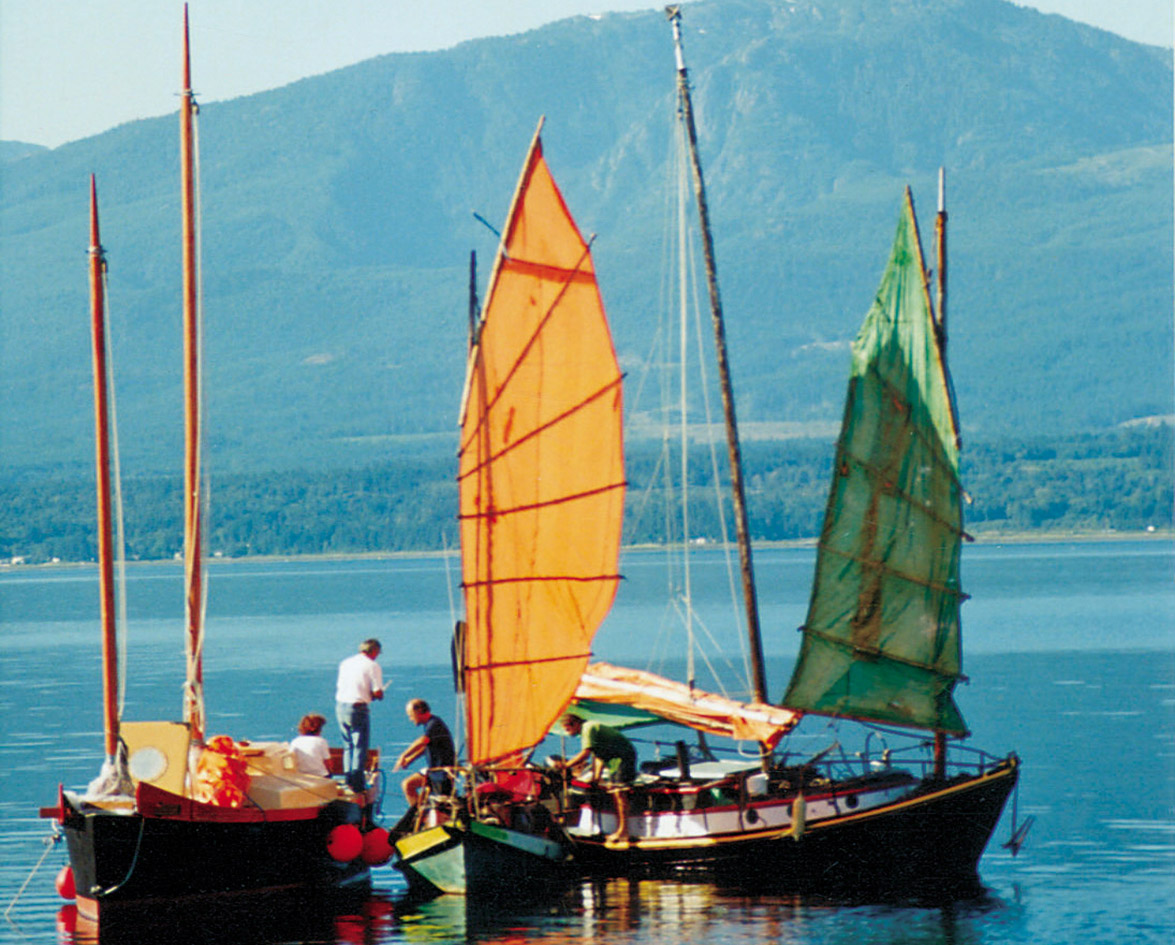The Silver Ann, a 33-foot wooden gillnetter, lived a hard life fishing off the west coast of British Columbia. She battled the elements for years, but held strong until the day an electrical shortage caused her pumps to fail, sinking her at the dock where she was moored. When she was pulled from her watery confines she was piled up in the shipyard and left for several years. The city of Richmond acquired her in 2001 and donated her to the Britannia Heritage Shipyard Society. For the next four years she sat outside Richmond Boatworks in the Britannia Heritage Shipyards, uncovered, filling with rain, buried in leaves, aging more with each passing season.
Now, two shipwrights and a handful of volunteers are restoring the Silver Ann. They are using the same techniques and tools that Sadajiro Asari used in 1968, when he built the boat for Richmond fisherman George Osaka. Asari, who once owned Kishi Boatworks on Richmond’s Sea Island, was in his late seventies when he built the Silver Ann. Asari put a lifetime of boat building experience into her construction.
“The labour and craftsmanship to build a boat like this was pretty exceptional,” says Colin Duffield, one of two shipwrights involved in the Silver Ann restoration. “It took [Asari] five months to originally build it. We’ve been working on it a year and a half now and we’re not even half way done.”
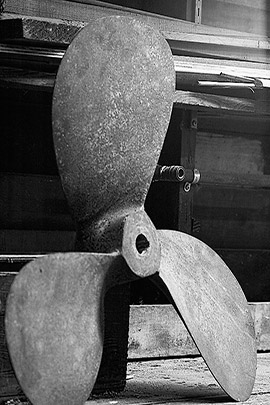
The Historic Britannia Shipyards
The Silver Ann signified the end of an era for the Britannia Shipyards. It was the very last boat built on the site and when it was launched, 60 years of boat-building history was launched with it.
The Britannia Shipyards are in Steveston, a small area at the mouth of the Fraser River, in the southwest corner of Richmond, British Columbia. In the late 1800s, Steveston became the largest fishing town on B.C.’s coast and boasted the most canneries in the British Empire. Immigrants from around the world heard of the jobs available in Steveston. The city quickly became one of the more multicultural places in Canada. European, Chinese, First Nations and Japanese people all gravitated to its fishing industry.
In 1917, the annual salmon run failed because of damage from the construction of the Canadian Pacific Railway. Debris left over from blasting at Hell’s Gate had blocked the river to the returning salmon. Many canneries closed and numerous fishermen moved away, turning instead to farming and mining. A few of the canneries converted into shipyards and a few of the Japanese fisherman, who were trained boat builders, stayed behind and began building boats of their own. By 1936, there were 16 Japanese boatworks in Steveston. Five of them, including Kishi Boatworks, were large businesses that constructed many boats each year. The rest were small, family-run boatworks producing one or two boats each year.
One such business was that of Otokichi Murakami, whose home and boatworks still stands today in the Britannia Heritage Shipyard as its welcome and information centre. Every winter, Murakami built two oak-keeled and cedar-planked gillnetters with only a band saw, a combination table saw and planer, and a small collection of hand tools. Despite the lack of equipment his boats were always “guaranteed for life”.
“He put a lot of time in,” George Murakami, son of Otokichi Murakami, recalled in a 1992 interview. “He’d go in [to his workshop] in the evening and touch the wood, all the work he had done, and admire it. He had a pride in making boats.”
The Japanese boats were built in a different style than other boats being built in the Lower Mainland. They were set up and planked onto temporary frames first and then the ribs were steamed and bent into place, right on the planking. “This made for a very tight and dry boat,” explains Bryan Klassen, the Britannia site supervisor. “The story persists that Murakami always threw a handful of rice into the bilges of his boats as a guarantee. Dry boats equaled dry rice.”
In 1942, during World War II, the Japanese population of Steveston was forced to leave and the boat builders lost everything they had spent decades building up. They were so highly regarded that even in their internment, many still built boats and had them shipped down to the coast by railway.
It’s the pride and passion that builders like Murakami put into their boats that Duffield and his volunteers hope to bring to the Silver Ann restoration. “Older boats are better built. They have a nicer feel. They are better maintained,” he says.
It is only fitting that the Silver Ann has returned to the Britannia site. “Britannia is a living museum where boats indicative of the West Coast fishing industry are restored,” explains Anne Carson of the Britannia Heritage Society. “This is what we do.” When the Silver Ann is fully restored she will be used as an ambassador for the Britannia Heritage Shipyard, as a fully working example of what she is, a classic gillnetter with a thousand stories to tell.





